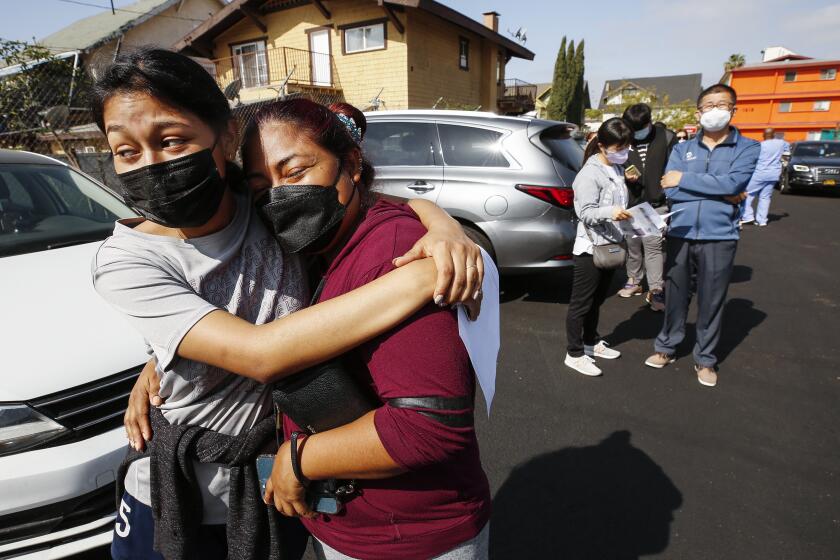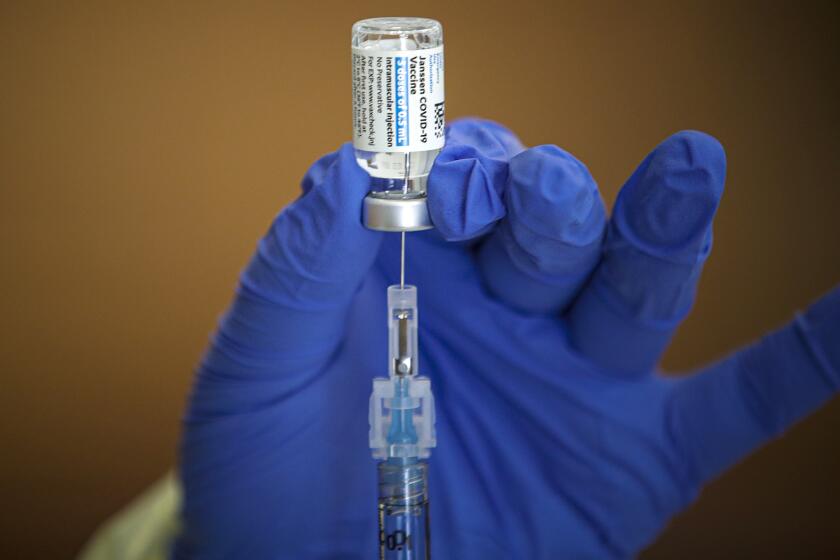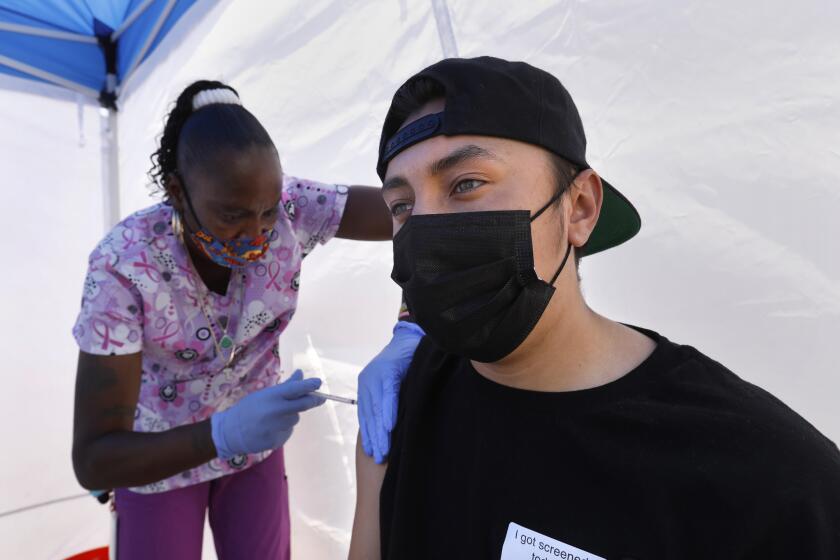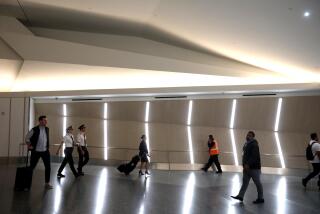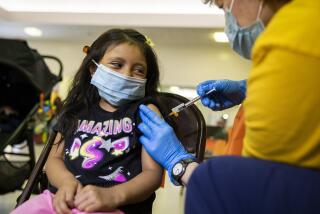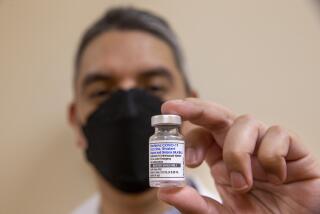Vaccinating young teenagers seen as vital to vanquishing COVID-19 in California
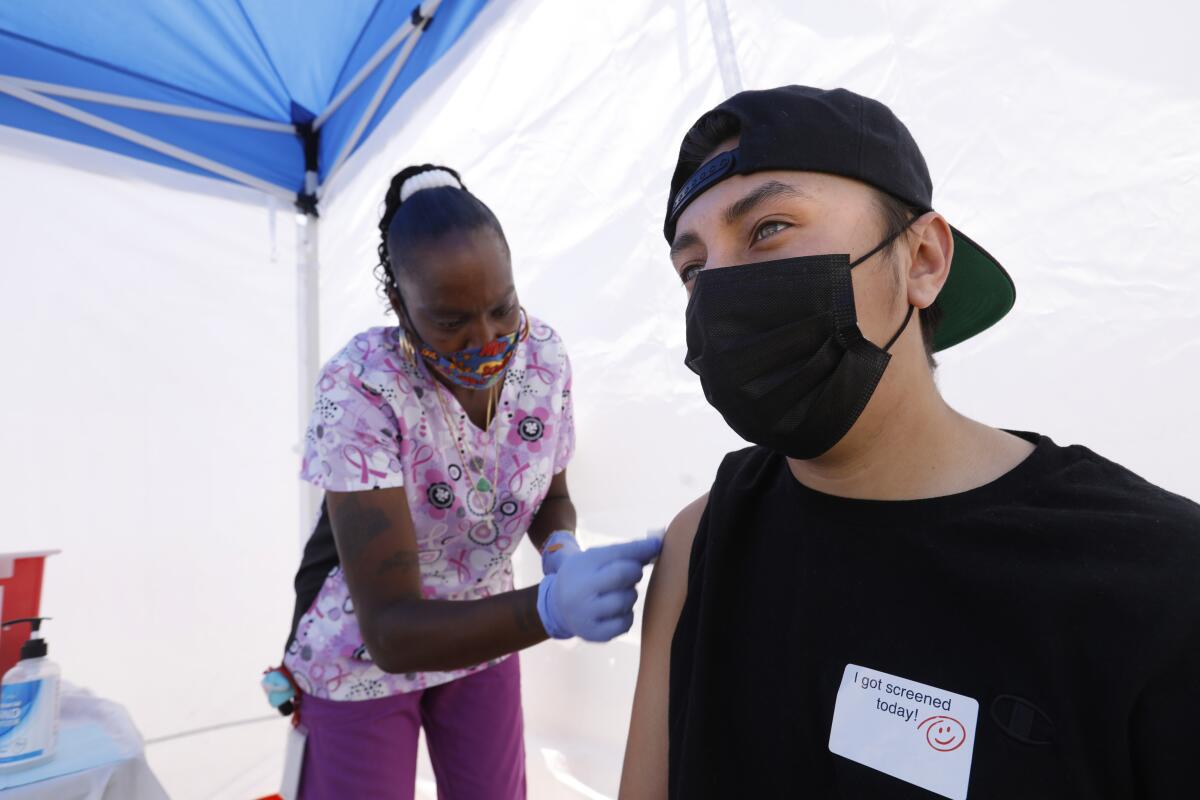
- Share via
When L.A. County Public Health Director Barbara Ferrer announced last week that the county could obtain herd immunity among adults and the oldest teenagers as soon as July, it marked an incredible milestone for a region once positioned as an epicenter of the COVID-19 pandemic.
But the remarks also raised questions about what role, if any, young people will play in achieving that goal. Adolescents between the ages of 12 and 15 became eligible for the COVID-19 vaccine in California late last week.
The county has already administered more than 9 million vaccine doses, with roughly 2 million first doses to go before 80% of all residents 16 and older will have received at least one shot, Ferrer said, adding, “At the rate we’re going, we expect that we can reach this level somewhere in mid- to late July, and that assumes that we continue to have at least 400,000 people vaccinated each week.”
Some experts said she may have been on to something — but only if all adults do their part.
COVID-19 vaccine appointments for California teenagers 12-15 could begin Thursday
One definition of herd immunity, also called community immunity, is a form of indirectly protecting people without immunity to a disease from an infection. It occurs when a significant percentage of the overall population is immune either through vaccines, or surviving a previous infection, according to Dr. Monica Gandhi, UC San Francisco professor of medicine and an infectious diseases specialist.
Gandhi said she doesn’t think adolescents necessarily need to be vaccinated to achieve herd immunity in a community, as long as a substantial percentage of adults get vaccinated. She pointed to the country that has vaccinated its population at the fastest rate of any in the world: Israel, which has a population of 9 million people.
At least 63% of Israel’s population has received at least one dose of the vaccine, and the results are promising. Israel has a daily national rate of just 0.3 cases per 100,000 residents. By comparison, 48% of U.S. residents have received at least one dose, and the U.S. had a daily rate of 10 cases per 100,000 residents in the last week. In California, about 51% of residents have received at least one dose, and the statewide case rate is about 3.6 daily cases per 100,000 residents.
Israel’s extraordinarily low case rates come without anyone under 16 being vaccinated.
Whether that means Israel has truly reached herd immunity isn’t fully known — to test that, the country would need to be fully reopened, and that hasn’t happened. Generally speaking, while restaurants, bars and cafes are open, residents must show their vaccine card in order to enter, Gandhi said.
Nonetheless, based on Israel’s progress, Gandhi said, “I think that our definition of herd immunity is going to be reached” when 70% of a total population is immunized — something that could theoretically be achieved with high vaccination rates of adults alone. In the U.S., about 78% of the population are adults.
The problem, other experts say, is that vaccinating roughly 80% of U.S. adults will be challenging if the nation can’t overcome vaccine hesitancy.
California is hiring 2,000 canvassers to phone-bank and knock on doors, and is running a flurry of ads and testimonials about COVID-19 vaccines.
Dr. Robert Kim-Farley, a medical epidemiologist and infectious diseases expert at the UCLA Fielding School of Public Health, said although it is encouraging to see the reductions in coronavirus cases, hospitalizations and deaths, “there are still significant numbers of people who have not yet been vaccinated or who are vaccine hesitant.”
In California, one of the states with the least amount of vaccine skepticism, only about 40% of residents are fully vaccinated. Already, several mass vaccination sites have announced plans to close amid waning demand.
Counties have varying rates of vaccination. San Francisco has 55% of its population fully vaccinated; Santa Clara County, 51%; San Diego, Orange and Ventura counties, 42%; L.A. County, 40%; Sacramento County, 36%; Riverside County, 33%; Fresno County, 32%; San Bernardino County, 29%; and Kern County, 27%.
Kim-Farley said the only way to markedly reduce the number of cases and circulation of COVID-19 in the community is to reach high levels of immunity, and that young people will play a significant role in getting to that goal.
“It will be important for children, as they become eligible for vaccination, to receive the vaccines if we’re going to achieve even more reductions in disease,” he said.
And even if a state or nation has averaged an 80% vaccination rate, if there are pockets of un-immunized people — such as a group of unvaccinated teenagers partying over the summer — the virus could spark an outbreak in that population.
Adding to that concern is the rise of COVID-19 variants with higher viral loads and increased transmissibility, said Dr. Peter Chin-Hong, professor of medicine and an infectious disease specialist at UC San Francisco. In April, there was an outbreak of the B.1.1.7 variant — the highly contagious strain first identified in the United Kingdom — among a youth sports team in Michigan.
“Back in the ‘old’ pre-variant days of COVID, we could have gotten away with conceptualizing herd immunity at 70% of vaccinated adults,” Chin-Hong said, noting that the virus was once overwhelmingly concentrated in older adults with just a smattering of cases in younger individuals.
“Now the landscape has changed dramatically and our old threshold may no longer hold true, and at least 80% of the entire population may be needed,” Chin-Hong said, adding that “vaccine hesitancy in the adult population may not make the 80% adult vaccination goal achievable.”
What’s more, recent research has found lower-than-expected vaccine efficacy in adults with compromised immune systems such as cancer and transplant patients, he said, so younger individuals will need to be included in the estimates for herd immunity simply because some vaccinated adults may not “count” as much.
Teenagers 12 to 15 are able to get the Pfizer-BioNTech COVID vaccine starting today. No appointment is needed at L.A. County-run sites.
Officials have also emphasized that in addition to protecting young people and the general population from COVID-19, vaccines are also important for protection from a rare but serious complication called multisystem inflammatory syndrome in children (MIS-C), which has affected 520 children in California and 186 in L.A. County.
Across the state, at least 21 children have died of MIS-C.
During a news briefing last week, California Health and Human Services secretary Dr. Mark Ghaly stressed that COVID-19 remains a threat to Californians between the ages of 12 and 15, of which there are an estimated 2.1 million across the state.
“Young people — even those without underlying conditions — are experiencing severe disease and even having cases where young people have died across our nation,” he said.
For its part, the L.A. County Department of Public Health echoed Ghaly’s sentiment, noting that there are about half a million 12- to 15 year-olds in the county.
“It’s a key population to increase our coverage in terms of the total county population, as well as community immunity,” the department said in a statement.
And because herd immunity numbers are more of a guess than a certainty at this phase of the pandemic, the more people — of any age — who can be vaccinated, the better, experts said.
“Eighty percent may hold in California as there is a substantial, albeit temporary, contribution from natural immunity since we were so hard hit during the winter surge,” Chin-Hong said. “But eventually it will catch up [to] us unless we all get immunized with vaccines.”
More to Read
Sign up for Essential California
The most important California stories and recommendations in your inbox every morning.
You may occasionally receive promotional content from the Los Angeles Times.
